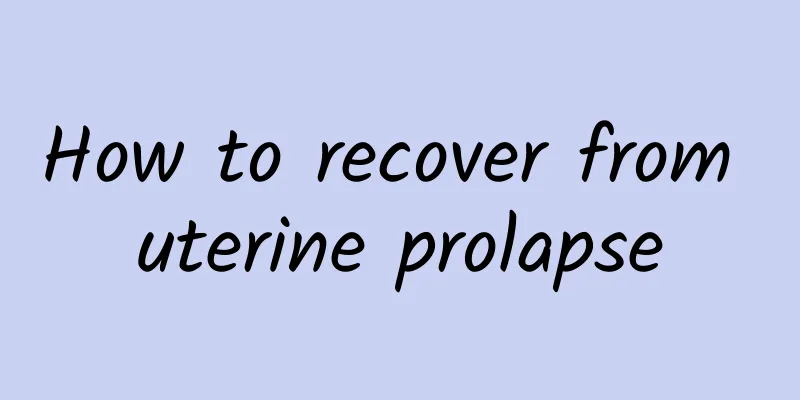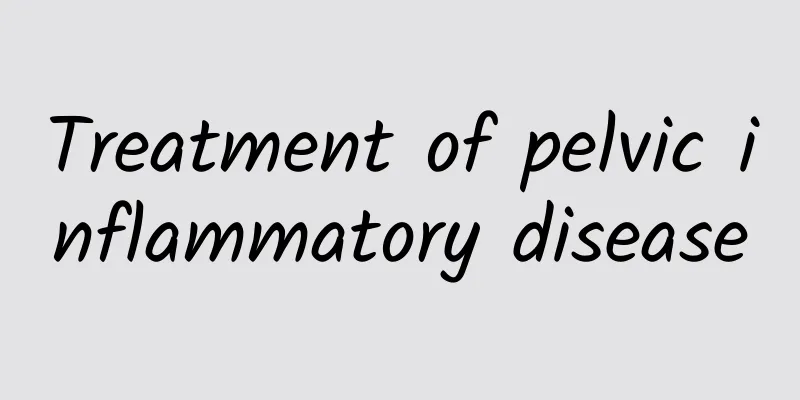How to recover from uterine prolapse

|
Uterine prolapse refers to the uterus descending along the vagina from its normal position, with the cervical outlet reaching below the level of the ischial spine, or even the entire uterus exiting from the vagina. Uterine prolapse can not only cause urinary and reproductive system infections, but in severe cases it can also lead to partial or complete loss of women's ability to work, and cause abdominal drop, back pain, leucorrhea, pus or blood. Uterine prolapse is common in menopausal and elderly women. It is very important to take good care of women during menopause and the elderly to prevent uterine prolapse. Childbirth injury is the main cause of uterine prolapse. Childbirth, especially dystocia, prolonged second stage of labor or vaginal surgery can easily cause damage to the cervix, main cervical ligament, uterosacral ligament and pelvic floor muscles. If the supporting tissue cannot return to normal after childbirth, uterine prolapse is likely to occur. Decreased ovarian function leads to reduced estrogen secretion, which weakens and relaxes the pelvic floor supporting tissue, making uterine prolapse likely to occur or aggravate the original prolapse. Congenital developmental abnormalities and uterine prolapse in non-puerperae are caused by poor development of the supporting tissue of the reproductive organs. Malnutrition and severe lack of nutrition can lead to muscle atrophy, relaxation of the pelvic fascia, loss of uterine support, increased abdominal pressure, long-term chronic cough, constipation or force of defecation will increase abdominal pressure and promote uterine prolapse. These are all causes of uterine prolapse. If you find it, you must go to the local relevant hospital for treatment without delay. Uterine prolapse is common in menopausal and elderly women. It is very important to take good care of women during menopause and the elderly to prevent uterine prolapse. Childbirth injury is the main cause of uterine prolapse. Childbirth, especially dystocia, prolonged second stage of labor or vaginal surgery can easily cause damage to the cervix, main cervical ligament, uterosacral ligament and pelvic floor muscles. If the supporting tissue cannot return to normal after childbirth, uterine prolapse is likely to occur. Decreased ovarian function leads to reduced estrogen secretion, which weakens and relaxes the pelvic floor supporting tissue, making uterine prolapse likely to occur or aggravate the original prolapse. Congenital developmental abnormalities and uterine prolapse in non-puerperae are caused by poor development of the supporting tissue of the reproductive organs. Malnutrition and severe lack of nutrition can lead to muscle atrophy, relaxation of the pelvic fascia, loss of uterine support, increased abdominal pressure, long-term chronic cough, constipation or force of defecation will increase abdominal pressure and promote uterine prolapse. These are all causes of uterine prolapse. If you find it, you must go to the local relevant hospital for treatment without delay. Get adequate rest, avoid heavy physical labor, avoid long-term standing or squatting, holding your breath and other actions that increase abdominal pressure. Pay attention to eating more seaweed foods, including vegetables, seaweed, kelp, cabbage, wakame, etc. Seaweed contains minerals such as calcium, iron, sodium, magnesium, phosphorus, and iodine. Treat chronic bronchitis and other diseases that increase abdominal pressure in time, do appropriate physical exercise, improve physical fitness, eat more fruits and vegetables, and supplement vitamins. |
<<: What is the reason for menstruation after amenorrhea?
>>: Why is painless abortion done under general anesthesia?
Recommend
What are the clinical symptoms of female cervical erosion?
What are the clinical symptoms of cervical erosio...
What medicine can be used to treat positive uterine fibroids? Can positive uterine fibroids be cured?
What medicine to use for positive uterine fibroid...
The review of the 21st version of the Esophageal Law focuses on clenbuterol
Although there have been cases of mad cow disease...
Do uterine fibroids affect pregnancy?
Generally, it is necessary to judge based on the ...
Guess! How to eat large and small tomatoes to lose weight most?
Tomatoes are in abundant production. If you take ...
Recommended hospitals for threatened abortion
Many patients with threatened abortion do not kno...
How many days after abortion can I go out?
Abortion is artificial miscarriage. If the recove...
Is pelvic effusion 2.4×1.6cm serious?
Is pelvic effusion of 2.4×1.6cm serious? Pelvic e...
What are the abortion drugs? How to use the drugs if you want to have an abortion?
Medical abortion, also known as "medical abo...
Lack of sleep can harm your health. 7 to 9 hours a day is just right
(Author: Pan Huaizong, Sui Ande, Zhang Yafang, ET...
Love text? Golden Glory? Jade text? I love eating mangoes but I’m afraid of getting fat. Which one has lower calories?
The mango season is here, and different varieties...
Several main clinical symptoms of vulvar leukoplakia
Vulvar leukoplakia is a disease that is very harm...
What should patients with cervicitis do in summer? Introducing self-care methods for patients with cervicitis
The weather is hot in summer, and many gynecologi...
Try the power of flowers for diet and weight loss! Cruciferous plants + Hibiscus tea, boost vitality
If you want to lose weight, you can also try the ...
Study: COVID-19 infection affects bone health! 3 ways to test and understand the quality of action
The cumulative number of people infected with the...









